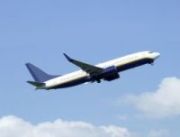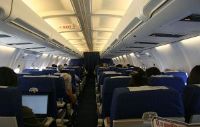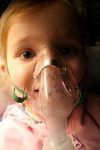The potential problems associated with lung diseases and air travel are well recognised. Many lung patients are now able to safely enjoy the benefits of air travel if they plan their provisions in advance. Here we have tried to compile information from as many airlines in Europe as possible. Airlines are listed in their country of origin.
Airline information
Find airline by country
Find airline by map
If you have a lung disease and decide to travel by air, you may experience a shortage of oxygen during your flight (hypoxia) which may or may not worsen your disease symptoms.
 Doctors are unable to predict how a patient may feel at altitude so methods have been devised to recreate this environment in a surgery. Lung patients should see their doctor to find out whether they are fit to fly.
Doctors are unable to predict how a patient may feel at altitude so methods have been devised to recreate this environment in a surgery. Lung patients should see their doctor to find out whether they are fit to fly.
The environment inside an aircraft is hypoxic (limited oxygen) because it has the same amount of oxygen available as if you were 8,000 ft (2438m) above sea level.
 Healthy patients can cope with the alteration in oxygen availability however; lung disease patients may find it difficult to breathe and may need extra oxygen to breathe easily in this environment.
Healthy patients can cope with the alteration in oxygen availability however; lung disease patients may find it difficult to breathe and may need extra oxygen to breathe easily in this environment.
Are you fit to fly?
The ‘hypoxic challenge’ is the easiest way for doctors to recreate an aircraft environment to assess how someones breathing may be affected and how effective they may find a supply of extra oxygen. The patient is asked to breathe a mixture of gas resembling the oxygen pressure present in an aircraft for up to 30 minutes. This is thought to be enough time to notice any changes occurring in the patient. If a patient shows symptoms of not having enough oxygen, their breathing should return to normal once they are given extra oxygen.
Oxygen supplementation
 Patients are not allowed to take pressurised oxygen cylinders on board a flight from an outside source so they must rely on the airline to provide their oxygen. Policies for oxygen supplementation vary between airline carriers so passengers with lung problems should check before travelling. Oxygen may not be available during take-off and landing.
Patients are not allowed to take pressurised oxygen cylinders on board a flight from an outside source so they must rely on the airline to provide their oxygen. Policies for oxygen supplementation vary between airline carriers so passengers with lung problems should check before travelling. Oxygen may not be available during take-off and landing.
Some airlines allow passengers to use portable oxygen concentrators, although there may be rules about which models can be used. These devices are capable of providing 1-5 litres of 90% oxygen per minute and need an external power supply for long haul flights but are not yet widely available to all passengers. Airlines often carry a limited supply of oxygen to be used in a medical emergency. If a patient is seriously ill during a flight, cabin crew have the ability to contact emergency medical support if they need to make a diversion before their final destination.
Contact the airline in advance
Some airlines may only provide facemasks for oxygen delivery despite nasal tubes being more comfortable for many people. Oxygen is usually delivered at a rate of between 2 and 4 litres per minute and patients that require a different flow rate to this must make arrangements in advance for their individual needs.
Airlines are usually happy to accommodate patients’ requirements but may ask for a letter from a doctor. Make sure you allow enough time for this to be organised before your trip. The airline will also let you know if there is an extra charge for your requirements.
Patients who need permanent ventilation are usually only allowed to fly if they are accompanied by a medic. Patients should check whether an electrical supply for the ventilator is available and have a back-up battery pack ready in case of an electrical failure.
